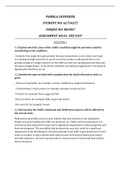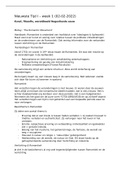Other
HEC101V Assignment answers
- Institution
- University Of South Africa (Unisa)
Written by a fourth-year student at Unisa. I work diligently and make sure my assignments/exams are done properly, ensuring that it meets UNISA's criteria. My marks are no way lower than 60%. I hope you find my work helpful!
[Show more]










